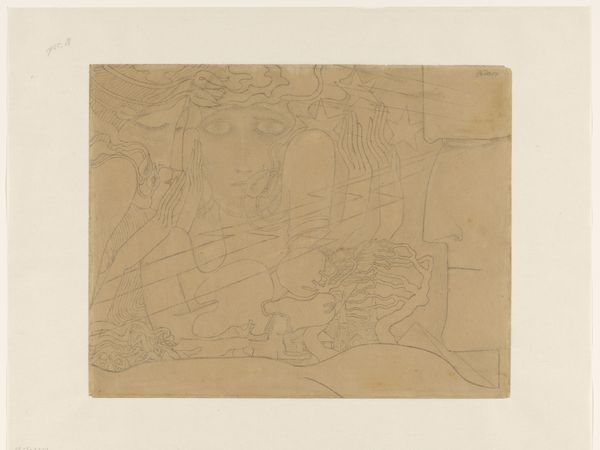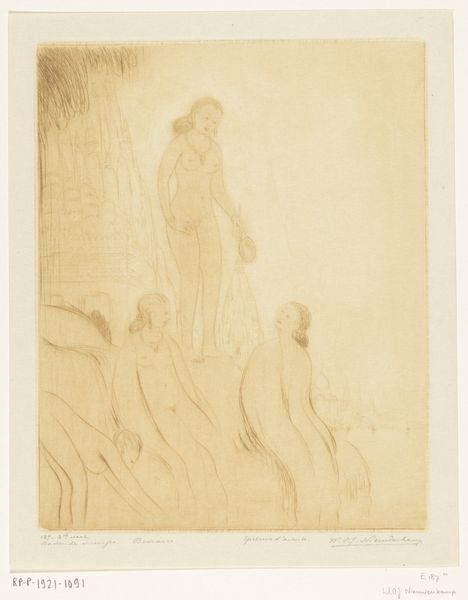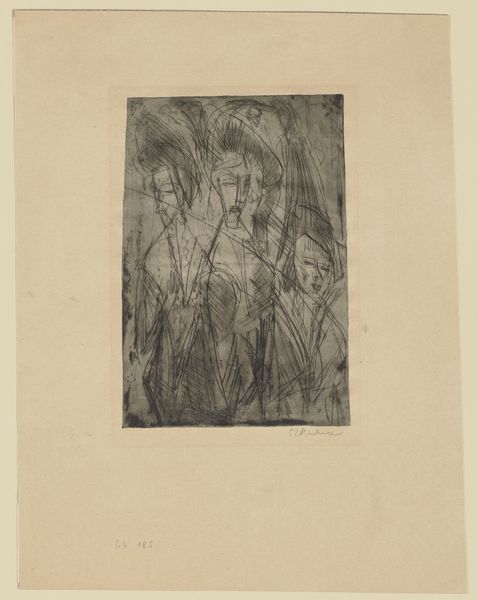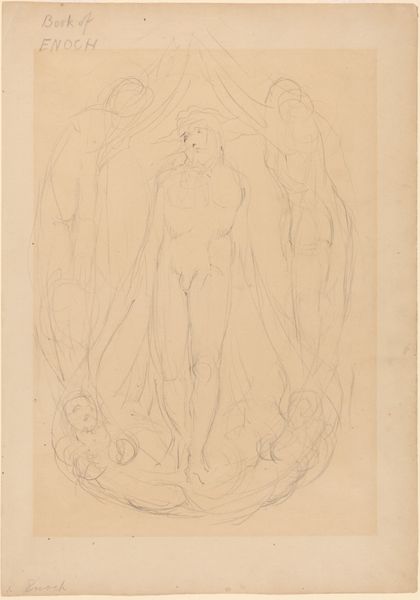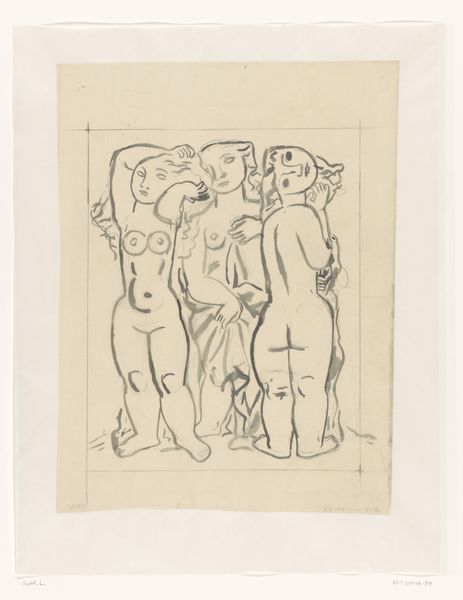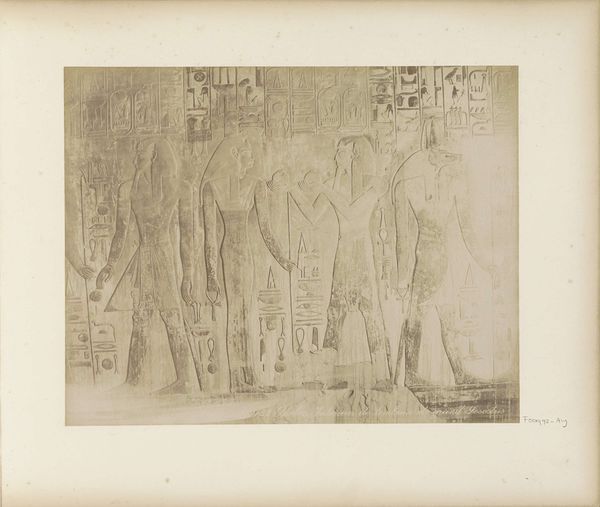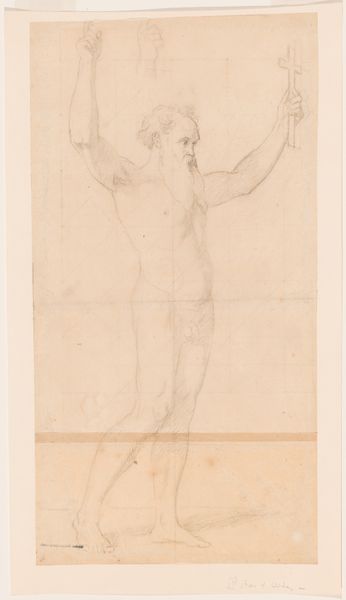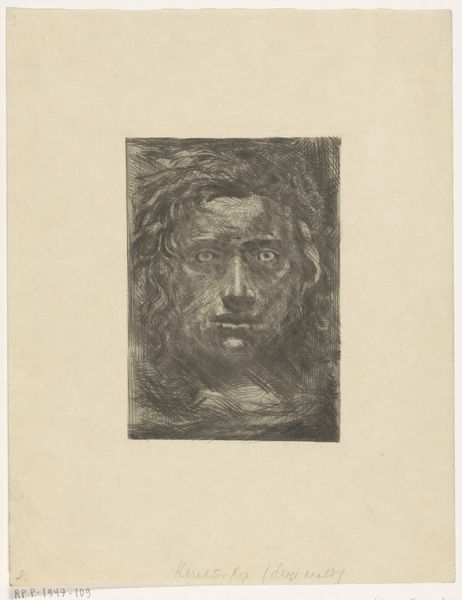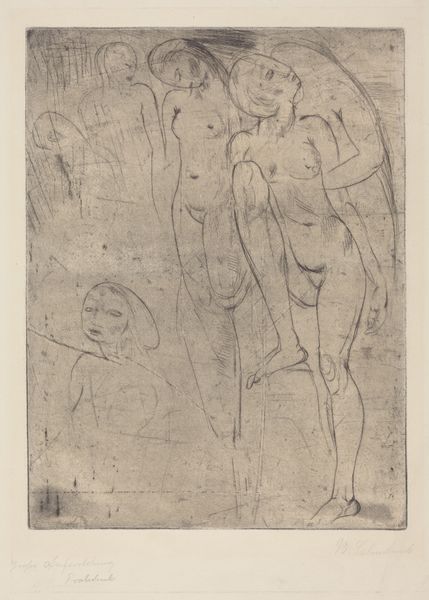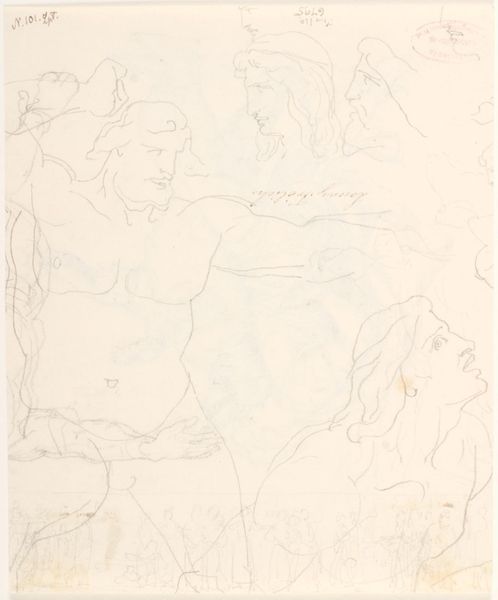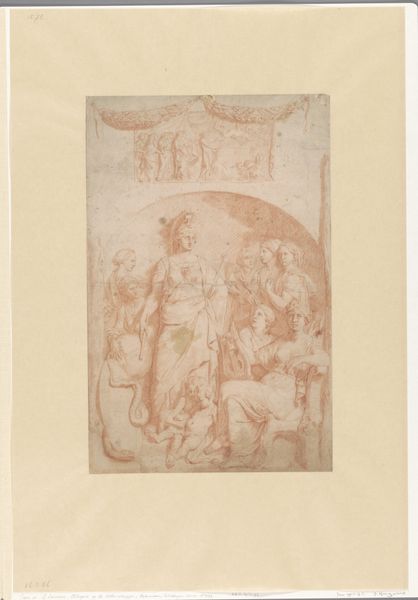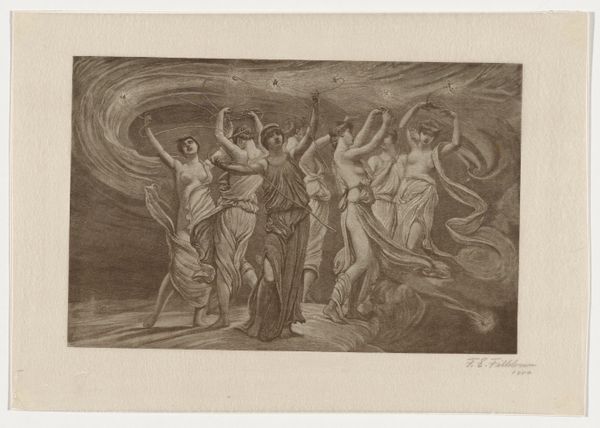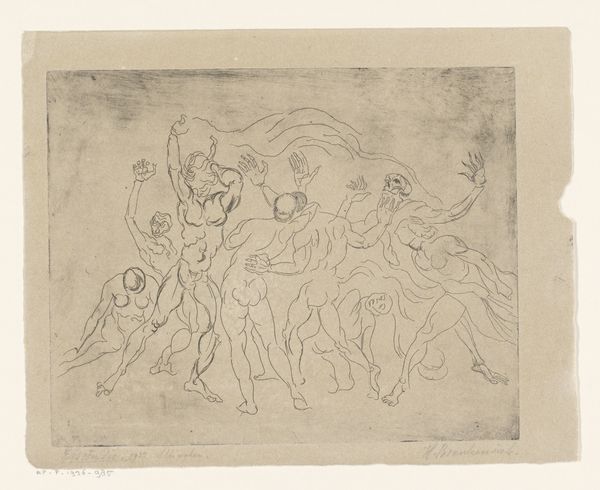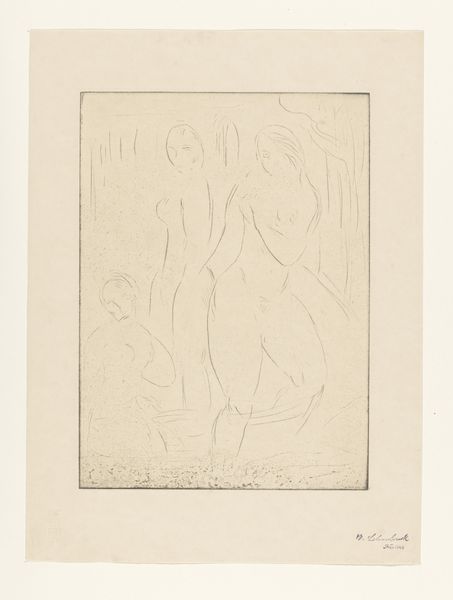
drawing, paper, pencil
#
portrait
#
drawing
#
figuration
#
paper
#
pencil
#
symbolism
#
nude
Dimensions: height 300 mm, width 372 mm
Copyright: Rijks Museum: Open Domain
Jan Toorop drew “De Sphinx” with pencil on paper. This mysterious drawing presents an opportunity to reflect on the Symbolist movement, prominent in the late 19th century. It suggests a world of dreams and the unconscious. The Symbolists were deeply skeptical about the institutions of their time, expressing that in strange, unsettling artworks. The image presents the mythological Sphinx as an androgynous figure looming over a landscape populated by nude figures. It draws on cultural references from classical mythology and contemporary Symbolist literature. The Sphinx traditionally represents a riddle, but here, it seems to embody a broader sense of existential questioning, that reflects the Symbolist artists’ critique of rationalism and materialism in industrialized Europe. Was Toorop making a comment about a cultural institution? Did his art critique social structures of his time? To understand “De Sphinx” better, one might delve into Symbolist literature, the artist's biography, and exhibition histories. By examining the social and institutional contexts, we can better understand how the artwork challenges established norms and invites us to question the world around us.
Comments
No comments
Be the first to comment and join the conversation on the ultimate creative platform.
